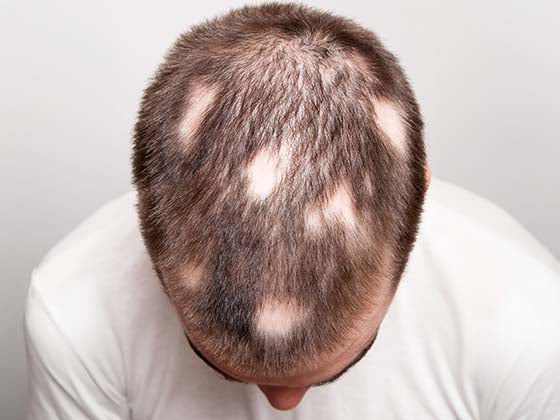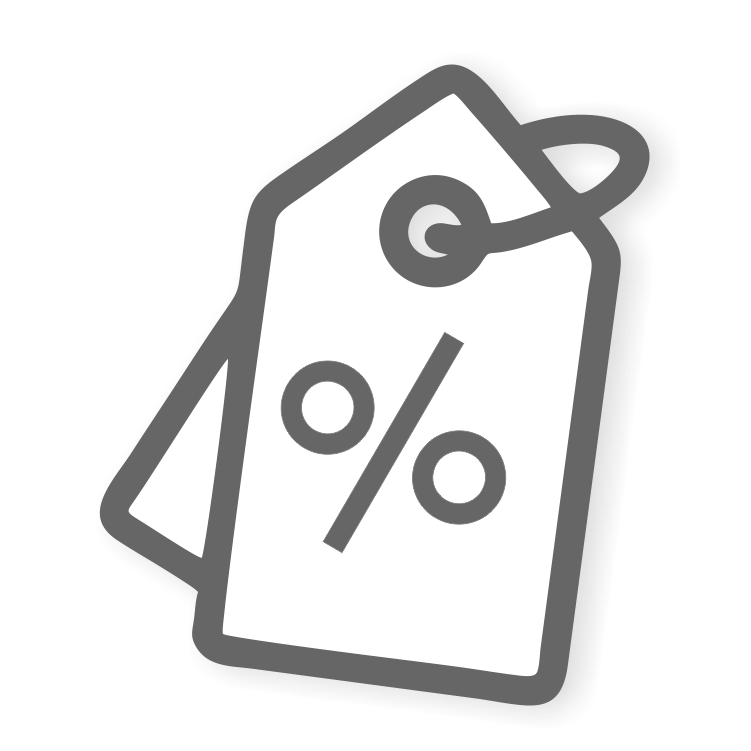Rotating shampoo and conditioner is an important approach for keeping hair healthy and reducing buildup. In this blog, we will discuss when and how to switch products for better hair health.
Understanding Hair & Scalp Needs: The Science Behind Changing Products

-
Hair and scalp care is not one-size-fits-all. The demands on your hair and scalp fluctuate throughout time due to a range of internal and environmental factors. Understanding the science behind these changes is critical for improving your hair care routine and deciding when and why to switch products. Our hair goes through different growth stages:
-
Anagen (Growth) Phase: The hair is actively developing.
-
Catagen Phase (Rest): The hair stops growing.
-
Telogen Phase (Shedding): Old hair sheds, and new hair begins to grow in its place.
Hair Growth Cycle and Its Impact on Shampoo Choice

The hair development cycle has a significant impact on how your hair responds to different hair care products, including shampoo. Understanding the stages of the hair growth cycle enables you to make more informed decisions about whether to switch products, what ingredients to look for, and how to deal with various hair issues that arise during the cycle.
Hair growth cycle:
-
The anagen phase (growth phase) lasts two to seven years. This is the active growth phase, when hair follicles create new hair. Approximately 85–90% of your hair is typically in this phase at any given time.
-
The catagen phase (transitional phase) lasts two to three weeks. This phase signifies the end of hair growth. Hair follicles contract, resulting in slower hair growth. The hair stops growing and separates from the follicle, preparing to shed.
-
The telogen phase (resting phase) lasts three to four months. This is the stage when hair stops growing and stays in place until it sheds. Approximately 10-15% of your hair is currently in this stage. Hair gradually sheds, allowing new hair to enter the anagen phase.
-
The exogen phase (shedding phase) usually lasts many weeks and overlaps with the telogen phase. During this stage, hair strands shed naturally and new hairs start to grow in. This is when you may see more hair on your brush or in the shower drain.
Impact on shampoo choice
-
Clarifying shampoos are intended to eliminate product buildup, excess oil, and pollutants. They can be especially useful during the Anagen period to keep your hair follicles from becoming clogged with debris, which can harm your hair's health. However, using clarifying shampoos too frequently might deplete natural oils and moisture, so use them sparingly (e.g., once a week or biweekly).
-
Moisturizing shampoos are essential for maintaining proper hair growth during the Anagen phase. Shampoos containing moisturizing compounds (such as glycerin or panthenol) promote hair suppleness, prevent breaking, and minimize frizz. These shampoos can also aid throughout the Telogen period, particularly if your hair becomes brittle and dry as it sheds.
-
Thinning hair may occur during the Telogen and Exogen phases, when shedding is more noticeable. Volumizing shampoos contain chemicals that cover the hair shaft, creating the appearance of fuller hair. These can assist to hide thinning and give your hair a thicker, fuller appearance.
-
A clean and healthy scalp is required for optimal hair development. Look for shampoos that can help with scalp issues such as dandruff, inflammation, or excess oil at any stage of the growth cycle. Ingredients such as tea tree oil, salicylic acid, and zinc pyrithione help improve scalp health by lowering inflammation, regulating sebum, and preventing hair follicle blockage.
-
During the Catagen and Telogen phases, when hair transitions and sheds, it is more prone to breaking. Shampoos containing proteins such as keratin, silk amino acids, or collagen can thicken hair and reduce breakage. These shampoos operate by sealing holes in the hair cuticle, strengthening the strands and making them less susceptible to snapping.
How Product Build-Up Affects Scalp Health

-
Clogged hair follicles: Product buildup can clog hair follicles and prevent natural hair growth. Hair follicles can become clogged with oils, silicones, or styling chemicals, preventing new hair from sprouting and slowing hair development.
-
Scalp discomfort: Hair buildup can cause irritation, itching, and inflammation on the scalp. This occurs when the creams clog the pores, causing increased sebum production, which can make the scalp greasy and irritating.
-
Dandruff and dry scalp: The buildup of product residue and dead skin cells can lead to dandruff. This buildup disturbs the skin's natural exfoliation process, resulting in flaking, dry scalp, and irritation.
-
Reduced scalp breathability: The scalp, like the skin on your face, requires oxygen to keep healthy. When the scalp becomes clogged with product buildup, it is unable to absorb nutrients adequately, resulting in a scalp that is undernourished and dehydrated.
-
Increased oil production: When product residue builds on the scalp, it might disrupt the natural oil production process. To compensate for the blockage and stripping of natural oils caused by the products, the scalp may overproduce oil.
-
Weakened hair: Over time, product buildup can cause hair to appear dull and lifeless. The cosmetics can coat the hair shaft, giving it a weighed-down appearance and diminishing natural volume.
Signs You Need a New Shampoo or Conditioner

The environment, season, health, and hair treatments all influence the demands of your hair and scalp over time. If your current shampoo or conditioner is no longer working as well as it once did, it may be time to switch. Some key signs that you need a new shampoo or conditioner are: hair feels weighed down or limp, hair is dry or brittle, oily scalp or hair, product build-up, scalp itching or irritation, hair appears to have no volume, your hair isn't responding to styling, dandruff or flaky scalp, change in hair color or texture, and your hair no longer feels clean after washing.
Choosing the Right Shampoo & Conditioner for Your Hair Type

Choosing the right shampoo and conditioner requires an awareness of your hair's specific requirements and issues. Selecting products targeted to your unique hair type—whether fine, curly, oily, or color-treated—will help preserve your hair's health, appearance, and manageability. Always remember that it may take some trial and error to find the appropriate combination for your hair, and as your hair's requirements change, so will your product choices.
The Role of Hair Porosity in Product Selection

Hair porosity is determined by the structure of the hair cuticle, the outer layer of the hair shaft. The cuticle is made up of overlapping scales, and the gaps between them control how quickly moisture and products enter and exit the hair. There are three broad forms of hair porosity: low, medium/normal, and high porosity.
-
Low porosity hair: The cuticle is tightly sealed, making it difficult for moisture and products to penetrate. Hair may appear shiny, but it can feel dry or oily and have trouble absorbing moisture. Prone to product buildup since products sit on top of the hair rather than absorbing into it.
-
Medium/normal porosity hair: Medium/normal porosity hair has an equally spread cuticle, providing for an optimal balance of moisture retention and release. Hair appears lustrous, silky, and is generally easy to maintain. Generally requires less upkeep and is more adaptable to most hair care treatments.
-
High porosity hair: High porosity hair has a high or uneven cuticle, which allows moisture to enter and depart easily. This can cause hair to absorb moisture rapidly but also lose it quickly. Hair with high porosity may appear frizzy, dry, and porous, and it is more prone to breakage and split ends. It typically absorbs moisture fast but struggles to hold it, resulting in dryness and frizz.
Sulfates, Silicones, and Other Ingredients to Watch
-
Sulfates: Many shampoos and cleaning solutions contain sulfates, which are detergents that help create a rich lather while also removing oils, debris, and product buildup. Shampoos typically contain sodium lauryl sulfate (SLS), sodium laureth sulfate (SLES), and ammonium lauryl sulfate. Sulfates are incredibly powerful cleansers, but they can also deplete the scalp and hair of natural oils, leaving hair feeling dry and potentially hurting sensitive scalp. If you have dry, damaged, or curly hair, sulfates can make it even drier by absorbing moisture. Sulfates can speed up the fading of color-treated hair by removing the color and making the hair more porous.
-
Silicones: Silicones are synthetic substances that are commonly used in conditioners, serums, and styling products to smooth, gloss, and detangle hair. Common silicones include dimethicone, cyclopentasiloxane, amodimethicone, and trimethylsiloxysilicate. Silicones can form a coating on the hair shaft, making it seem smooth and shiny for a short period, but they can accumulate on the hair and scalp with time. This can make hair feel heavy, greasy, and resistant to moisture and treatments. Some silicones (for example, dimethicone or cyclopentasiloxane) are not water-soluble and must be removed with sulfate-based shampoos, which might cause further dryness or irritation.
-
Parabens: Parabens are synthetic preservatives that prevent germs and fungi from growing on items, extending their shelf life. Common parabens are methylparaben, ethylparaben, propylparaben, and butylparaben. Parabens are known to mimic estrogen in the body and can alter hormonal balance, potentially causing long-term health problems. Parabens can cause irritation to delicate skin, resulting in itching or inflammation on the scalp.
-
Alcohols: Some alcohols are used in hair care products to help them dry quickly or to add texture, however they can dry out the hair. Isopropyl alcohol, ethyl alcohol (ethanol), and sD alcohol are among the most commonly used drying agents. These alcohols can remove moisture from the hair, causing dryness and frizz, particularly in people who have curly, dry, or damaged hair.
-
Artificial fragrances and dyes: These are synthetic compounds that lend a pleasing aroma and color to items. They are frequently listed as fragrance or parfum on the ingredient list and may also contain particular colors. Fragrances and synthetic dyes can cause irritation, allergies, or sensitivities in certain persons, resulting in itching, redness, or discomfort. Certain chemical colors can build up on the hair, making it appear dull over time.
How Seasonal Changes Affect Hair Care Needs

Adapting your hair care routine to the changing seasons is essential for maintaining healthy, vibrant hair. Winter requires extra moisture and protection, while spring focuses on balancing oil production and soothing the scalp. Summer demands UV protection, hydration, and frizz control, and fall is all about replenishing and strengthening hair after the stress of summer. By understanding how each season affects your hair and adjusting your routine accordingly, you can keep your hair looking and feeling its best throughout the year.
Common Myths About Switching Hair Care Products

Some of the most common myths about changing hair care products are debunked, and you will discover what really works for your hair.
-
Myth: You should avoid switching hair products too frequently.
-
Truth: Your hair doesn’t get "used to" products in the way you might think. Hair doesn’t build a tolerance to products, and switching hair care products is actually beneficial when your hair's needs change. For example, if you’re using a heavy moisturizing shampoo in winter and find it too much in the warmer months, switching to a lighter formula can help maintain healthy hair.
-
Myth: Natural substances are always preferable for your hair.
-
Truth: While natural components might be beneficial, they are not necessarily preferable to synthetic alternatives. It depends on your hair type and requirements. Some natural oils (such as coconut oil or castor oil) can be too heavy for fine or greasy hair, and many plant-based substances can irritate sensitive scalps. Synthetic substances such as silicones or proteins can benefit specific hair textures, such as smoothing coarse hair or mending damage. The goal is to locate products that are tailored to your unique hair type and scalp demands.
-
Myth: Sulfates are usually terrible for hair.
-
Truth: While sulfates can remove natural oils from the hair and scalp, they are not necessarily damaging to everyone. Sulfate-based shampoos are great in cleansing and removing debris and oils, making them a wonderful choice for those with oily scalps or who require a deeper cleanse. However, if your hair is dry, curly, or color-treated, sulfates may worsen the dryness or cause the color to fade faster.
-
Myth: Switching shampoos causes hair to fall out.
-
Truth: Changing shampoos does not directly cause hair loss. Hair shedding is a typical component of the hair development cycle, and you should expect to lose some hair every day, regardless of the shampoo you use. If you have hair loss after switching products, it could be due to stress, hormonal changes, or an underlying scalp problem. However, some shampoos containing harsh chemicals or sulfates may irritate the scalp and cause hair thinning or breaking, which may seem as hair loss. In that situation, use a soft, nourishing shampoo that is appropriate for your scalp type.
-
Myth: Expensive hair care products are always better.
-
Truth: Price does not always correlate to quality when it comes to hair care. Expensive treatments frequently use high-end packaging or expensive marketing, but drugstore products can be just as effective—and sometimes more so—if they meet your hair's demands. The most significant factor is the ingredients and how well they meet your hair's needs. Look for components like keratin, panthenol, aloe vera, or glycerin, which can be found in both expensive and low-cost formulations.
Does Hair Get "Used To" Shampoo?
No, your hair doesn't technically "get used to" shampoo. However, when your hair's demands change and product buildup occurs, you may realize that the same shampoo no longer works as well as it did when you initially started using it. It's critical to listen to your hair and adjust your routine accordingly—whether that means changing your shampoo seasonally, incorporating a clarifying wash, or adjusting your product selection based on changes in your hair and scalp health.
The Truth About Rotating Between Multiple Shampoos

It's not necessary for everyone, but for some people, rotating shampoos can be beneficial, particularly if you experience build-up, have changing hair conditions, or need a variety of benefits throughout the year. If you find a shampoo that works well for your hair, sticking with it can be just as effective. The most important thing is to listen to your hair—if it feels dull, dry, or weighed down, don't switch things up; if it feels balanced and healthy, don't rotate.
How Long Should You Use a Product Before Switching?
The length of time you should use a product before switching is mostly determined by your hair type, needs, and how your hair reacts to the product. For most shampoos and conditioners, 2-4 weeks is sufficient time to give the product a fair trial. If you see any bad effects or if your hair requires a change, you can switch sooner. Pay attention to the condition of your hair and how it reacts to the product to determine whether you should continue or try something new.
Expert Tips for Maintaining Hair Health

Maintaining healthy hair entails more than just using the proper products; it also requires consistency, excellent habits, and being aware of how your hair responds to various conditions. Whether you want to avoid damage, encourage growth, or simply keep your strands looking their best, these professional suggestions will help you keep your hair healthy and vibrant. Expert advice for maintaining hair health includes not overwashing, deep conditioning on a regular basis, protecting hair from heat damage, trimming regularly to prevent split ends, being gentle with wet hair, not overusing chemical treatments, eating a healthy diet, avoiding stress, protecting hair from the elements, and staying hydrated.
Customizing Your Hair Wash Routine Based on Lifestyle

Your lifestyle influences how frequently you wash your hair, what products you use, and how you care for it. Whether you're busy, on the move, or prefer a more relaxed routine, customizing your hair care routine to your lifestyle will help maintain your hair healthy and manageable. Expert tips for tailoring your routine to your lifestyle include: active lifestyle, busy professional or on-the-go routine, low-maintenance or "wash-and-go" lifestyle, travel or vacation lifestyle, family or parenting lifestyle, self-care and relaxed lifestyle, and eco-friendly lifestyle. By considering your hair type, daily activities, and personal preferences, you can create a program that fits seamlessly into your life.
When to Consult a Professional for Scalp Issues
For an accurate diagnosis and treatment plan, it's always a good idea to see a dermatologist or trichologist if you're dealing with any ongoing or getting worse scalp problems. A specialist can help you determine the best course of action for your particular scalp and hair health needs, and early intervention can help prevent additional damage and suffering. Never be afraid to consult a professional, particularly if your scalp problem is negatively impacting your quality of life or if you aren't getting better with at-home treatments.
Personalized Hair Care: Finding the Right Routine for You

Understanding your hair type, addressing particular issues, and modifying your lifestyle are all necessary steps in creating the ideal customized hair care regimen. You may establish a regimen that accentuates your hair's inherent beauty and health by selecting the appropriate products, modifying how often you wash it, and adding specific treatments. Remember that consistency is essential; over time, healthier, easier-to-manage hair will result from sticking to a regimen that suits you.
















